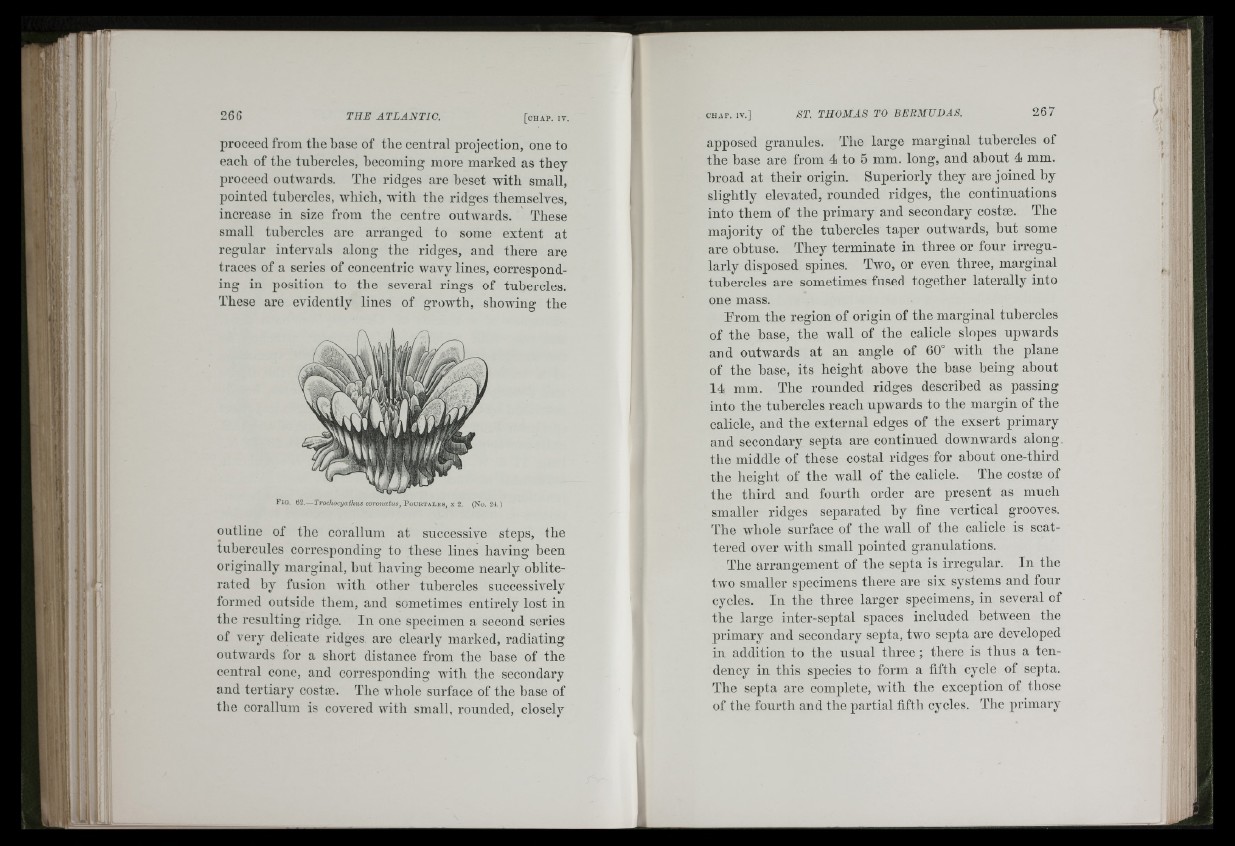
a
11
h-
:ji
Mil
proceed from the base of the central projection, one to
each of the tubercles, becoming more marked as they
proceed outAvards. The ridges are beset with small,
pointed tubercles, AA'hich, with the ridges themselves,
increase in size from the centre outAvards. These
small tubercles arc ai-ranged to some extent at
regular intervals along the ridges, and there are
traces of a series of concentric wavy lines, corresponding
in position to the several rings of tubercles.
These are evidently lines of growth, shoAving the
F i o . 6 2 .— I ' r o c h o c y a t h u s c o r o n a t v s , V o v r t a i . e s , X 2 . (No. 2 4 .)
outline of the corallum at successive steps, the
tuhercules corresponding to these lines having heen
originally marginal, hut liaA'ing become nearly obliterated
by fusion Avith other tubercles successively
formed outside them, and sometimes entirely lost in
the resulting ridge. In one specimen a second series
of very delicate ridges are clearly marked, radiating
outwards for a short distance from the base of the
central cone, and corresponding Avitli the secondary
and tertiary costte. The whole surface of the base of
the corallum is coA'ered with small, rounded, closely
apposed granules. The large marginal tubercles of
the base are from 4 to 5 mm. long, and ahout 4 mm.
broad at their origin. Superiorly they are joined hy
slightly elevated, rounded ridges, the continuations
into them of the primary and secondary costse. The
majority of the tubercles taper outwards, hut some
are obtuse. They terminate in three or four irregularly
disposed spines. Tavo, or even three, marginal
tubercles are sometimes fused together laterally into
«I one mass.
From the region of origin of the marginal tubercles
of the base, the wall of the calicle slopes upwards
and outwards at an angle of 60° with the plane
of the base, its height above the base heing about
14 mm. The rounded ridges described as passing
into the tubercles reach upwards to the margin of the
calicle, and the external edges of the exsert primary
and secondary septa are continued downwards along
tlie middle of these costal ridges for ahout one-third
the height of the wall of the calicle. The costm of
the third and fourth order are present as much
smaller ridges separated by fine vertical grooves.
The whole surface of the wall of the calicle is scattered
over Avith small pointed granulations.
The arrangement of the septa is irregular. In the
two smaller specimens there are six systems and four
cycles. In the three larger specimens, in several of
the large inter-septal spaces included betAveen the
primary and secondary septa, two septa are developed
in addition to the usual three ; there is thus a tendency
in this species to form a fifth cycle of septa.
The septa are complete, Avith the exception of those
of the fourth and the partial fifth cycles. The primary
I I
]'4 ■
ilil.